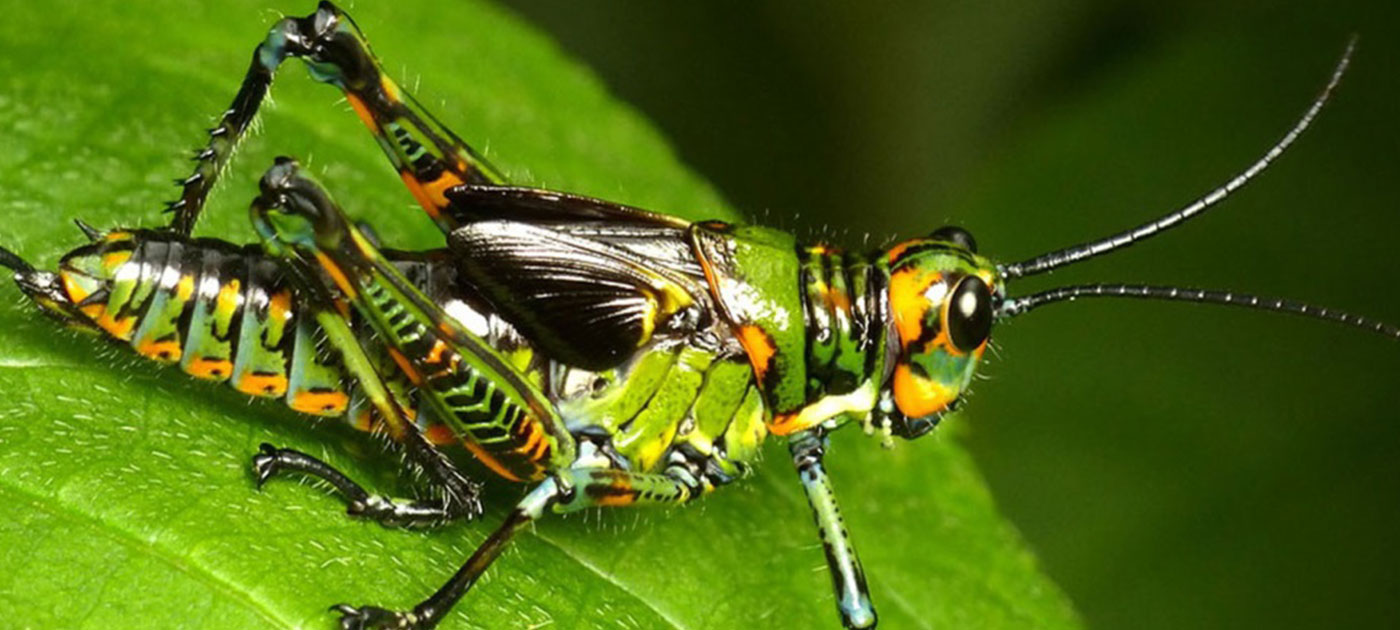
Adrianne, an award-wining ballroom dancer, was devastated. The loss of her leg prevented her from dancing and made many everyday activities, such as walking and stretching, a challenge. As an amputee, she was exhausted just going through her daily routine, which caused her great emotional and physical strain.
Adrianne felt overwhelmed and alone until she met Dr. Hugh Herr, one of the world’s top bionic prosthetic limb designers. A double amputee who lost both legs in a climbing accident, Dr. Herr is the group director of the Biomechatronics research lab at the Massachusetts Institute of Technology where many scientists and engineers are striving to change the design of artificial limbs which are difficult to use and extremely painful. Their efforts are benefiting from studies on a very curious insect model: the horsehead grasshopper.
In a recent study, Thomas Matheson and Jan M. Ache found that the horsehead grasshopper, as well as some other insects, can move its limbs without relying on any muscles. They studied denervated grasshopper limbs that were flexed at different angles and found that a “passive joint force” moves limbs to their original positions when flexed.
The researchers found that insects’ limb movements are influenced by both muscle forces and other structures within the joint. These structures complement the associated muscles and vary depending on how the limb is used. For instance, the horsehead grasshopper uses its middle legs to walk and its hind legs to jump, so these legs have different passive joint forces. In each limb, the passive force supports the weaker muscle, enabling energy to transfer between stronger and weaker muscles (Ache & Matheson, 2013). The team hopes that their work with grasshoppers and other insects will spur a new understanding of how limbs work and can be controlled (University of Leicester, 2013).
In Brief:
- Bioengineers are challenged to design prosthetics that efficiently utilize energy and are easier for amputees to use.
- Studies on the limbs of the horsehead grasshopper reveal that passive forces originating at joints can cause limbs to move without any muscles or nerves.
- These passive joint forces will be useful when designing prosthetics for specific activities, such as dancing and climbing, as well as for general activities like walking.
This article was written by cYw32. As always, before leaving a response to this article please view our Rules of Conduct. Thanks! -cYw Editorial Staff

![[Graph by cYw Staff. Info: Atlas of Limb Prosthetics and Journal of Rehabilitation Research and Development]](https://www.curiousyoungwriters.org/wp-content/uploads/2014/12/graph.jpg)

![[Graphic by Staff Illustrator]](https://www.curiousyoungwriters.org/wp-content/uploads/2014/12/Adrienne-1024x957.jpg)
